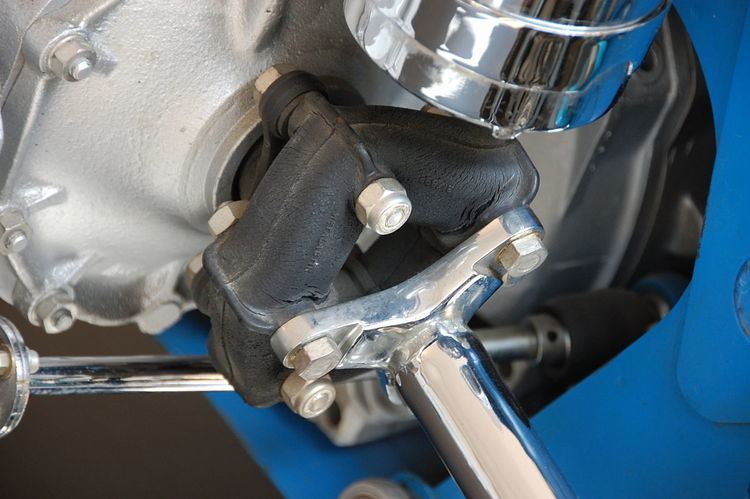 | ||
A giubo (/ˈdʒuːboʊ/ JEW-boh; etymology: giunto Boschi), also known as a flex disc, and sometimes misspelled as guibo, is a flexible coupling used to transmit rotational torque between the drive shaft and the companion flange on mechanical devices, such as an automobile engine.
Contents
The giubo is made from flexible synthetic rubber and is designed to allow some angular misalignment while reducing driveline vibration in mechanical power transmission applications.
How it works
Input and output shaft flanges are bolted to the giubo on either side using alternating hole positions, so that the flanges are not connected directly to one another but instead only through the rubber material of the coupling. The elasticity of the rubber absorbs vibration and flexes for alignment. It follows that the rubber must withstand the application's full transmitted torque, for which reason the rubber is often reinforced internally using moulded-in fibre material.
Name
Giubo is a contraction of the Italian word giunto ('joint' or 'coupling') and the surname of the Italian engineer who designed and patented the first flex disc, Antonio Boschi (b1896-d1988). He later founded GIUBO SpA, a company solely dedicated to manufacturing flex discs.
Use
The giubo is believed first to have been used for this purpose on the Alfa Romeo model 1900, produced between 1950 and 1959. As used on several British cars, such as the Triumph GT6 MKII/GT6+, Lotus Elan and some early versions of the Land Rover Discovery, the item is known as a Rotoflex coupling.
